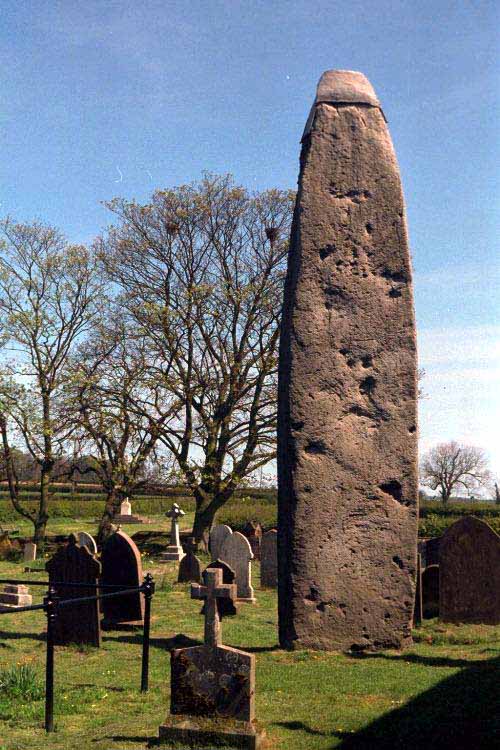
It is a mystery why the Rudston Monolith is not better known; this stunning slender pillar is the tallest standing stone in Britain. The stone is hewn out of glomerate Moorstone grit, from the Cleveland Hills, west of Whitby, possibly at Grosmont. The task of transporting this immense megalith over 40 miles to Rudston must have presented a staggering feat of labour and strength, showing that it was a matter of extreme importance to the architects of the monolith.
At ground level its circumference is 5 metres and its present height is just under 8 metres. An excavation conducted by Sir William Strickland in the late 18th century suggested that its depth below ground is as great as its height. How it arrived here is a matter for great speculation, however this was so, it was a considerable feat of engineering skill and human effort in the late Neolithic or Bronze Age.
It seems likely that the stone marked a prehistoric holy place or worship centre for the indigenous pagan religion, and that Anglo—Saxon missionaries followed the successful strategy of "Christianising" this already sacred object, possibly by fixing a cross to the top. This could account for the name 'Rudston' for the old English word for cross is ‘rood' and stane means 'stone'.
A church may have been built on the site of the present church in Saxon times. But all traces have now vanished, and no church building was recorded in Rudston in the Domesday survey of 1086. A popular myth about the origin of the stone is that the devil, angered at the building of a church on this pagan sacred hill hurled a huge stone javelin or thunderbolt at it to destroy it, but by divine intervention his aim was deflected and the stone landed in its present position!